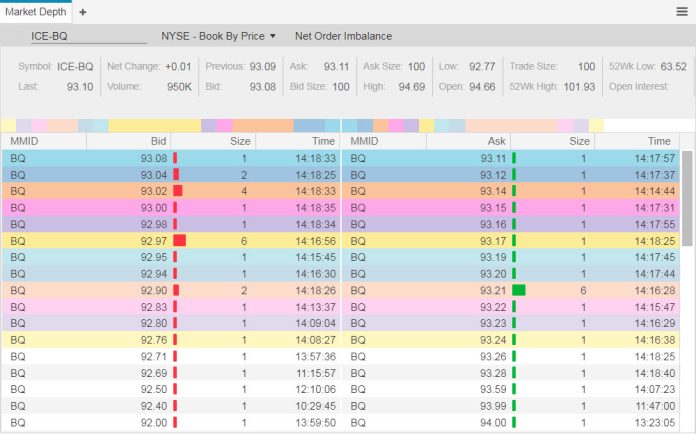The Stock Market Depth Screen, also known as the Level 2 screen, provides traders with a detailed view of the current supply and demand for a particular stock. It allows traders to see the number of buyers and sellers at various price levels, as well as the size of their orders. This information can be valuable for making informed trading decisions and understanding market sentiment.
How to Read Stock Market Depth
When looking at the Stock Market Depth Screen, there are a few key elements to consider:
1. Price Levels: The screen typically displays a list of price levels, showing the highest bid price (the price at which buyers are willing to purchase shares) and the lowest ask price (the price at which sellers are willing to sell shares). In between these levels, there may be additional bids and asks at various prices.
2. Order Size: Alongside each price level, the screen shows the number of shares that buyers are willing to purchase or sellers are willing to sell at that price. This can give traders an indication of the strength of the demand or supply at each level.
3. Market Depth: The depth of the market refers to the number of open buy and sell orders at each price level. A deep market with a large number of orders at various price levels indicates strong demand and supply for the stock.
4. Bid-Ask Spread: The difference between the highest bid price and the lowest ask price is known as the bid-ask spread. A narrow spread suggests that there is a tight alignment between buyers and sellers, while a wide spread may indicate less liquidity and potential price volatility.
5. Order Flow: Traders can also observe the flow of orders coming into the market, which can provide insights into market sentiment and potential price movements.
How to Use Stock Market Depth
The Stock Market Depth Screen can be a valuable tool for traders looking to gauge market sentiment and make informed trading decisions. Here are some ways in which traders can use this information:
1. Identifying Support and Resistance Levels: By analyzing the depth of the market, traders can identify key support and resistance levels where there is significant buying or selling interest. These levels can be used to set entry and exit points for trades.
2. Assessing Market Sentiment: The order flow and market depth can provide insights into market sentiment. For example, a large number of buy orders at a particular price level may indicate strong bullish sentiment, while a high volume of sell orders may signal bearish sentiment.
3. Gauging Liquidity: Traders can assess the depth of the market to determine the liquidity of a stock. A stock with a deep market and narrow bid-ask spread is likely to have high liquidity, making it easier to enter and exit positions with minimal impact on price.
4. Spotting Potential Price Movements: Changes in the order flow and market depth can signal potential price movements. For example, a sudden increase in buy orders at a specific price level may indicate impending upward price movement.
5. Confirming Trends: Traders can use the Stock Market Depth Screen to confirm existing market trends. A strong alignment of buy orders at higher price levels and sell orders at lower price levels can confirm an upward trend, while the opposite may signal a downward trend.
In conclusion, the Stock Market Depth Screen provides traders with valuable insights into market sentiment, order flow, and potential price movements. By understanding how to read and interpret this information, traders can make more informed trading decisions and gain a competitive edge in the market.
